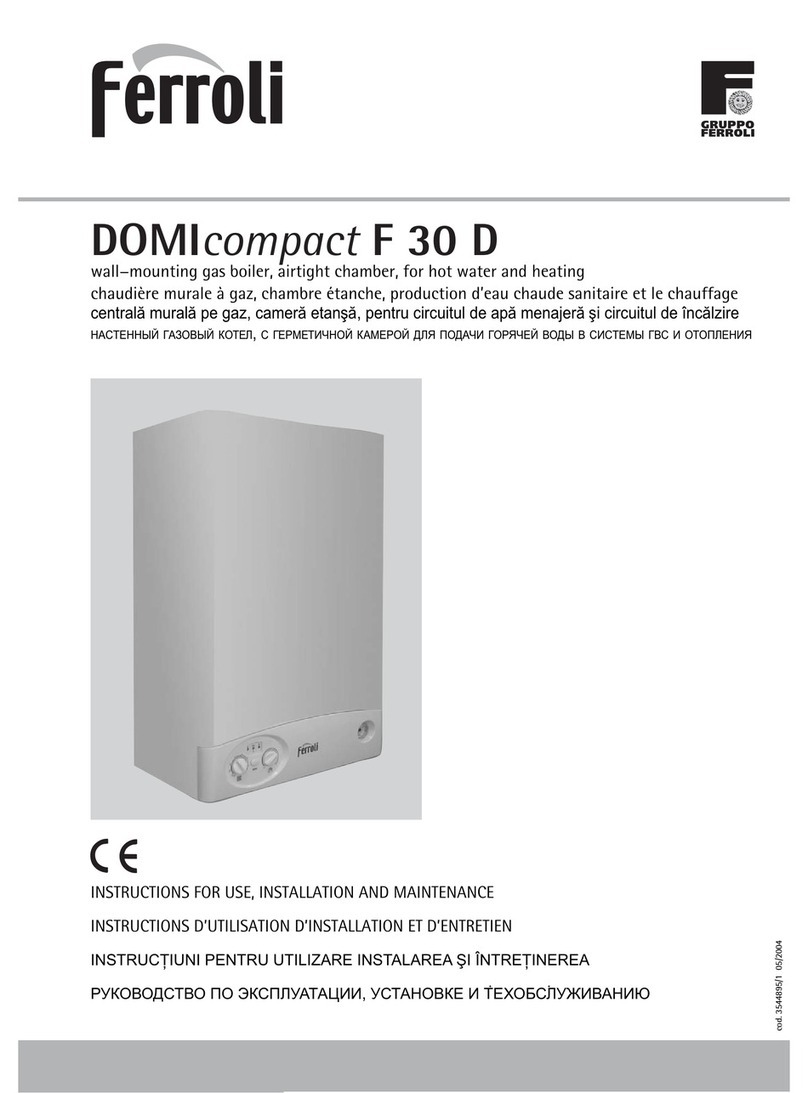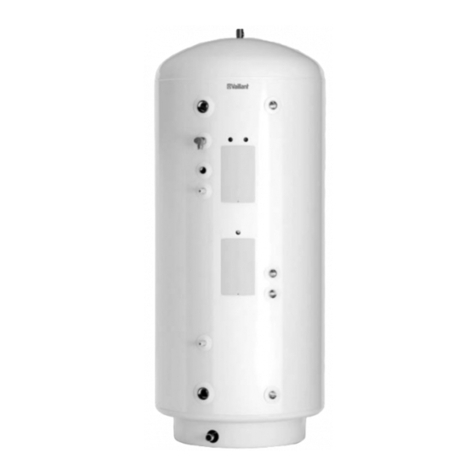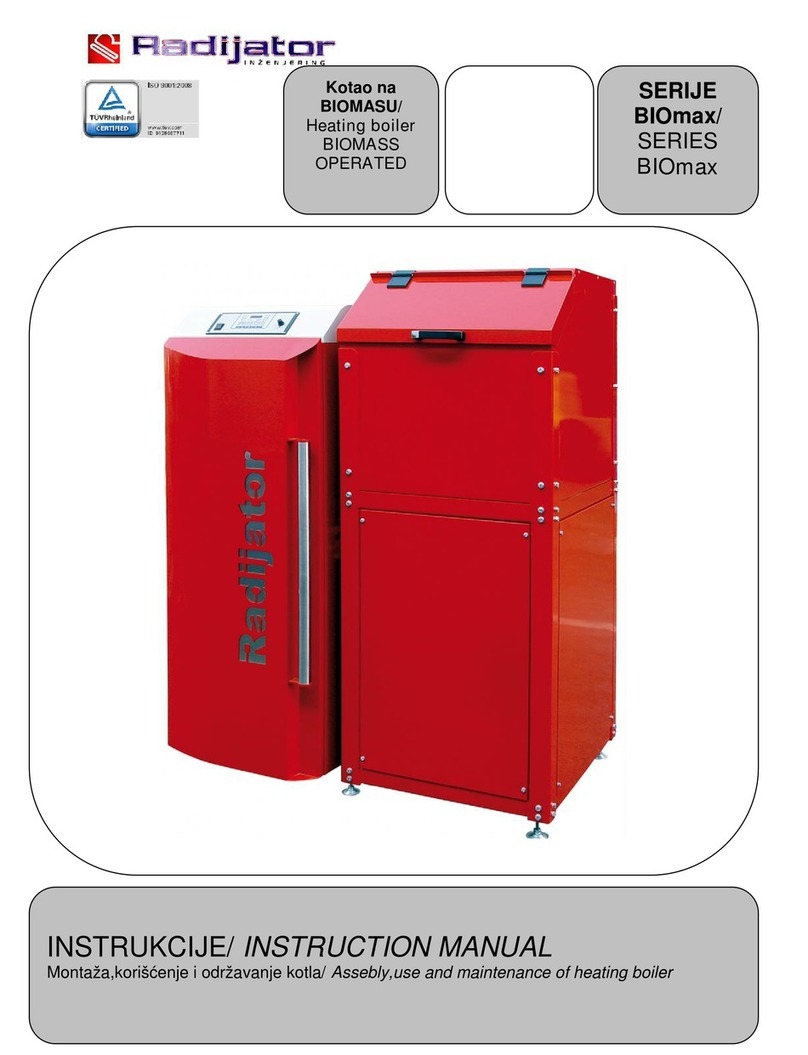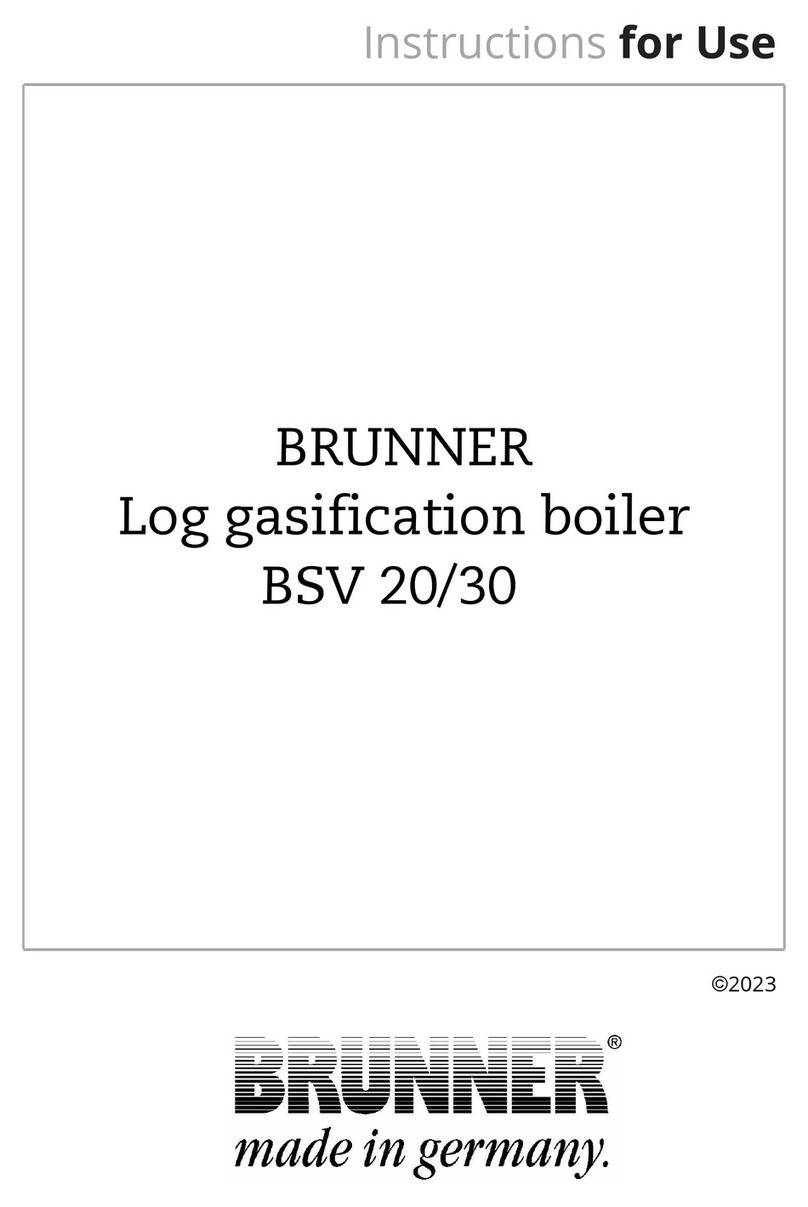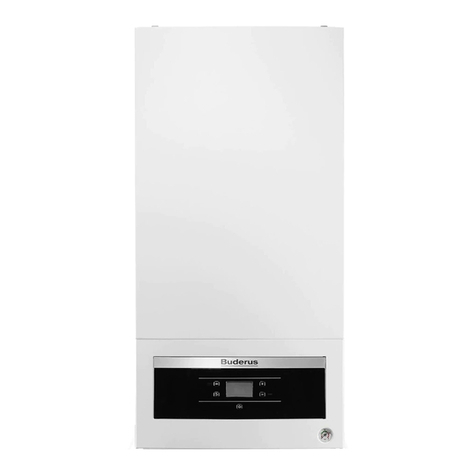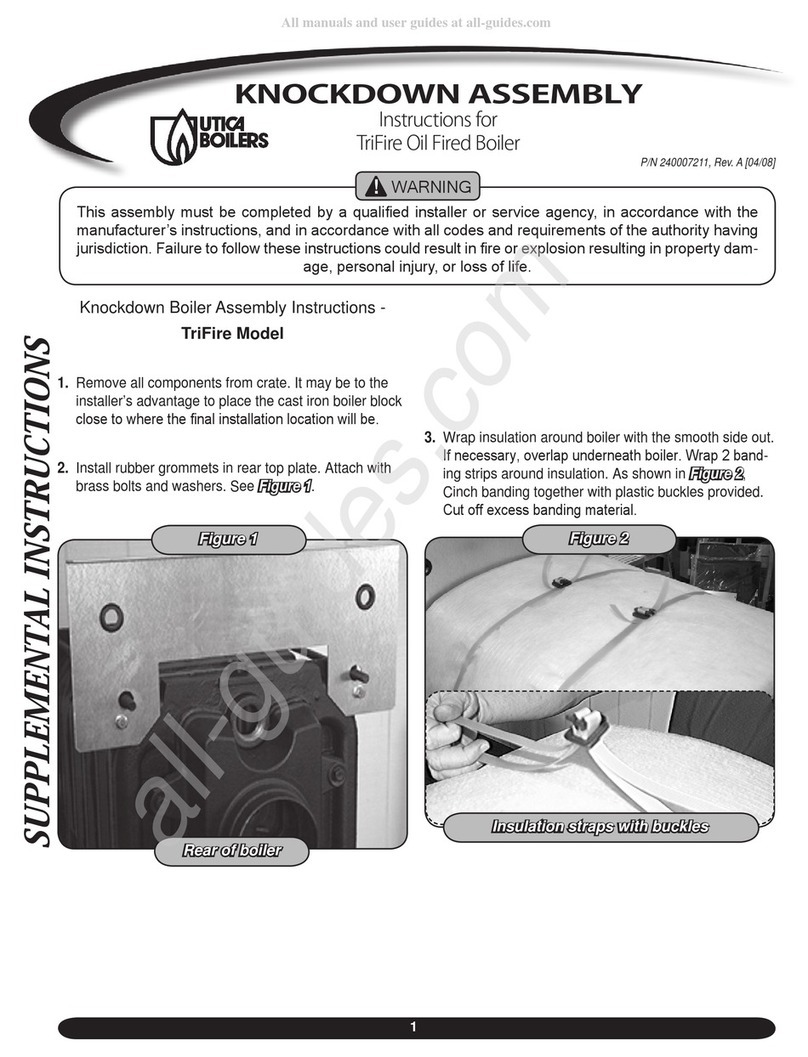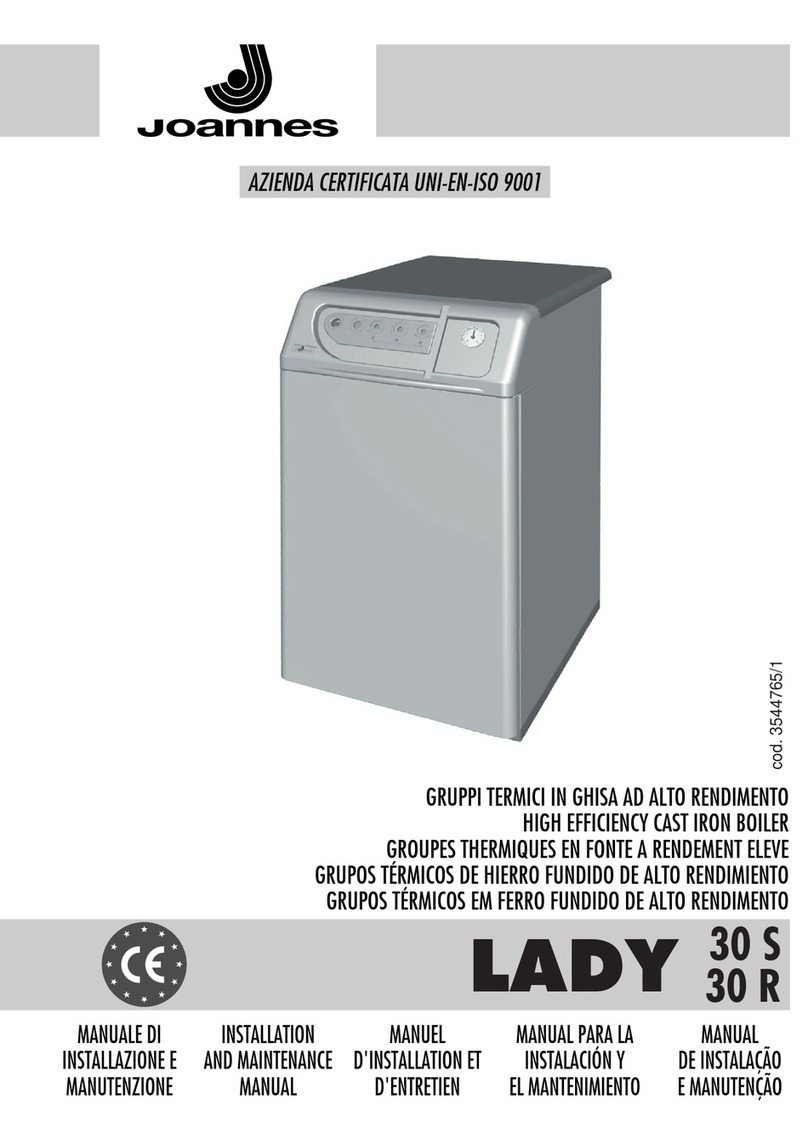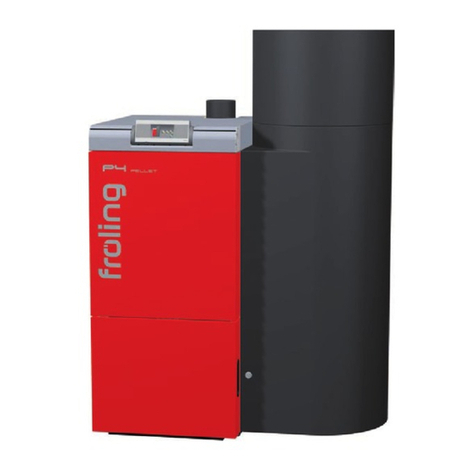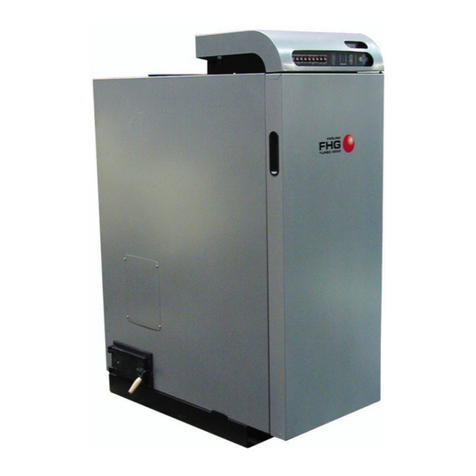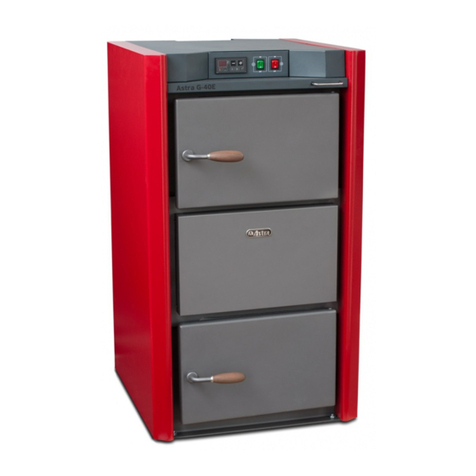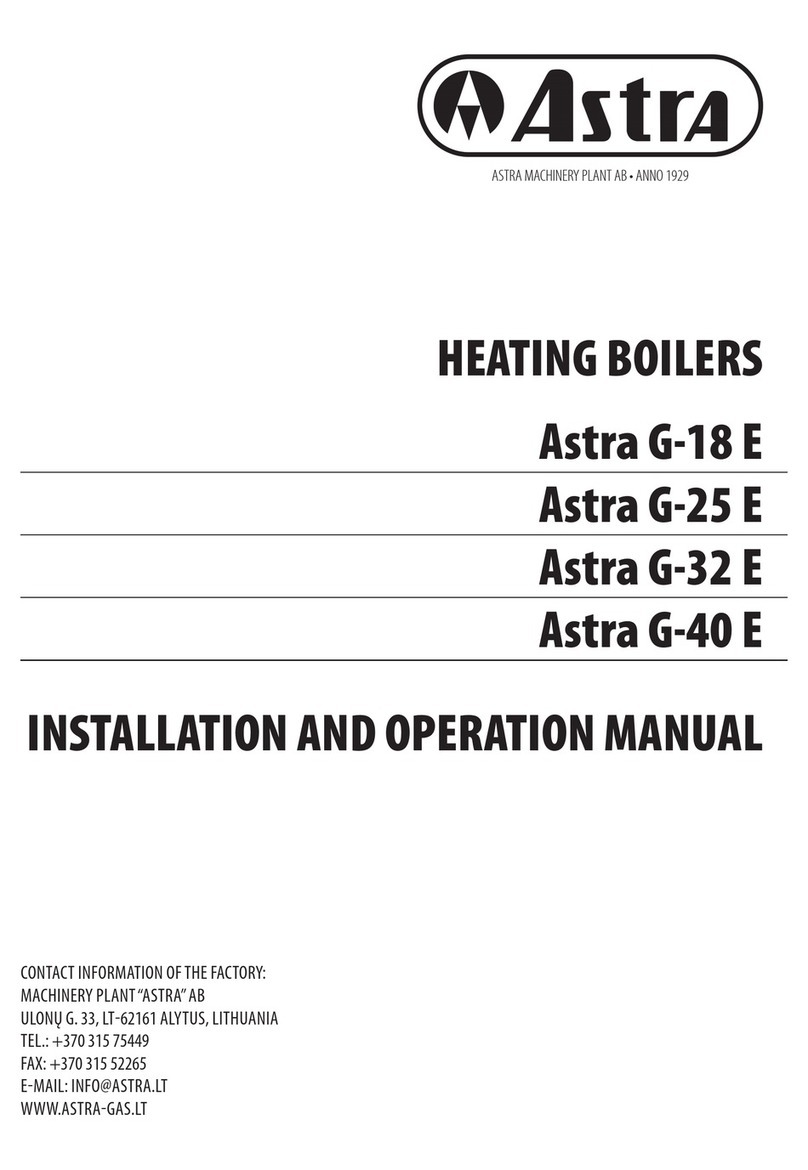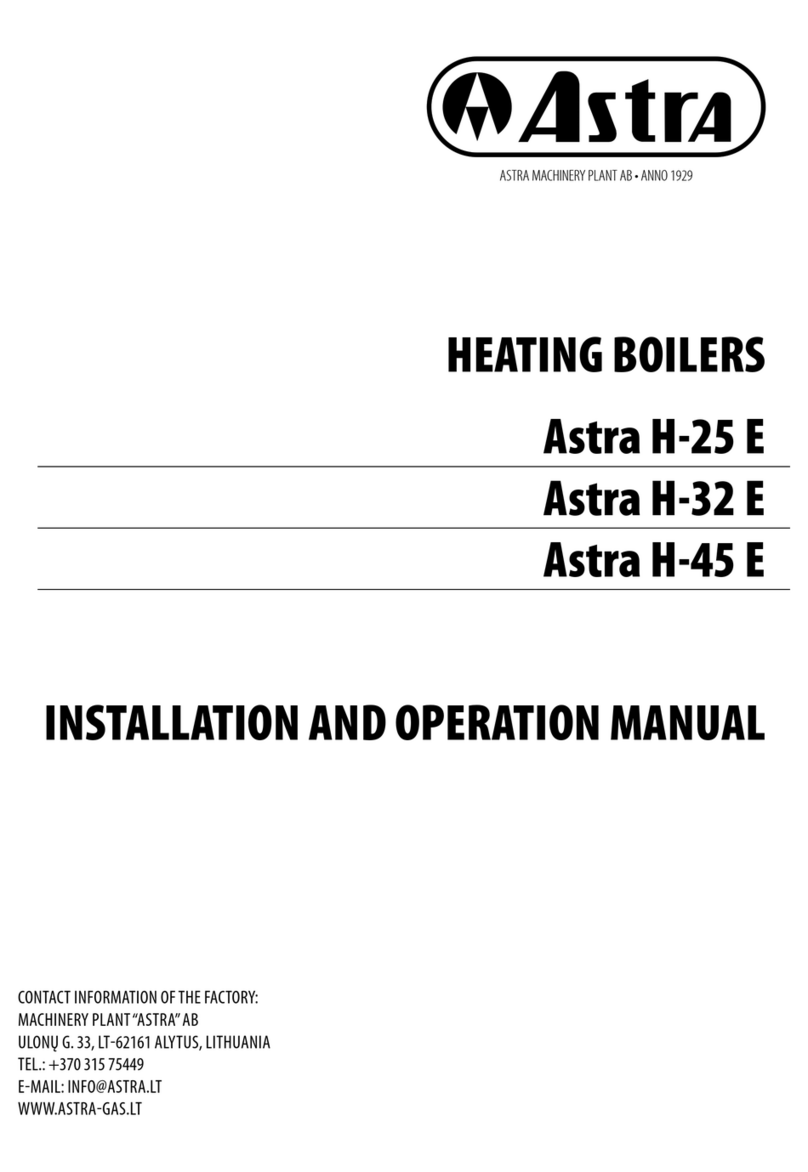
the heating system, it is necessary to install a four-way mi ing valve between the boiler
and the heating system. Water temperature supplied from the boiler during e ploitation
should be no less than 70°C.
WARNING In order to g arantee a nat ral water circ lation in the boiler, the pipeline
between the boiler and the fo r-way mixing valve (boiler – fo r-way mixing valve – boiler) sho ld be of
the same diameter and meet the diameter of the boiler connection branches (see fig. 4, I - boiler ring).
Fo r-way mixing valve sho ld be installed above the boiler.
The boiler will operate in the most effective and economic way, if a circulating pump is
installed in the system. It should be installed behind the water supplied by the four-way
mi ing valve in the pipe. This guarantees a constant water flow in the heating system.
The boiler may also operate in a natural circulation (gravitational, without a pump)
system, however in this case, it won’t be totally used and its operation conditions won’t
be optimal. In case when reconstruction of natural (gravitational) circulation systems is
performed by installing the pump, in order to avoid emergencies, when the pump is
broken, it should be installed on the edging line together with reverse valves, as shown
in fig. 4 and 5. The pump is controlled with the electronic controller of boiler and is
connected to the electric socket on the rear wall of the boiler.
Dirt collector should be installed in the returning water pipe of the heating system.
Boiler room should be ventilated. The required airflow necessary for combustion and
ventilation should be also guaranteed. For this purpose, boiler room doors should have
grille or there should be a gap between the doors and the floor. If there is no possibility
to bring air in from another rooms or the house is very tight, it will be necessary to
make an opening in the e terior wall. Air quantity should be no less than 1, 6 m
3
/kW
per hour. Cross-section area of the opening should be no less than 0,001 m
2
/kW. The
required air quantities and areas of the opening are presented in the table below.
For e ample: the area of airflow opening should be 0,025 m
2
or 250 cm
2
, i.e. 16 16 cm; or
the height of the gap under the door - about 4 cm when door width is 60 cm.
Put the boiler on the hard (e.g. concrete) and even ground, closer to the chimney pot.
Leave at least 600 mm gap between the back wall of the boiler and building structure for boiler
servicing and cleaning. The smallest distance between a lateral wall of the boiler and building structure
is 400 mm. If building structure is of the flammable materials, this distance should be doubled. At least
800 mm gap should be left from the other side of the boiler to have an access to the backside of the
boiler, its servicing and cleaning. From three sides of the boiler the floor of 300 mm and from the front
of the boiler the floor of 500 mm should be of inflammable materials. Screw supporting legs in to the
base of the boiler and level the boiler with screw nuts using a level.
Smoke e haust opening of the boiler should be connected with the chimney by a metal
pipe. Internal diameter of the metal connecting pipe should be at least of the e ternal diameter of the
smoke e haust opening of the boiler. To improve the traction, a connecting pipe between the boiler and
the chimney should be installed with an inline towards the boiler. All junctions should be carefully
tightened by a heat-resistant material.
If the boiler is installed higher than the heating equipment, the water level measuring
instrument must be installed in the heating system.
When the boiler is installed in the open heating system, on the highest point of the heating
system there has to be mounted the open e pansion vessel. The volume of e pansion vessel has to
be about 10 % of the total volume of water in the heating system (including the volume of the boiler).
The diameter of the overflow pipe of the e pansion vessel has to e ceed the diameter of
the safety inlet pipe by one unit.
Safety return pipe has to be connected to the return pipe of the heating system and to the
bottom of the e pansion vessel.
It is forbidden to install any fittings in the safety inlet and return pipes between the boiler
and e pansion pipe.
Chimney requirements. It is recommended to install acid-resistant stainless steel shell
into the stone chimney. It improves traction of the chimney and protects the stone chimney from
destr ction d e to the condensate (moist re) impact. Internal diameter of the shell sho ld be no less
than the external diameter of the smoke exha st opening of the boiler. Chimney shell may be ro nd or
Boiler type G-18 G-25 G- 31,5 G- 40 G- 50 G- 80 G- 100
Required air quantity
per hour, m
3
/h 29 40 40 50 80 128 160
Area of airflow
opening, m
2
0,018 0,025 0,025 0,03 0,05 0,08 0,1
